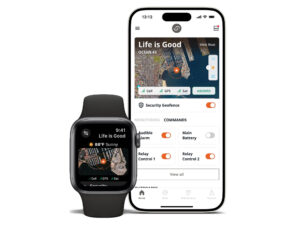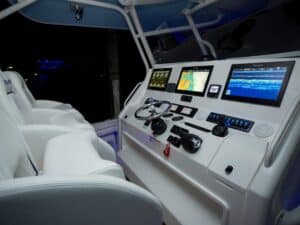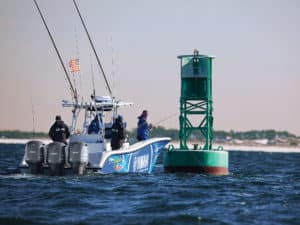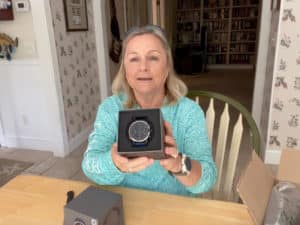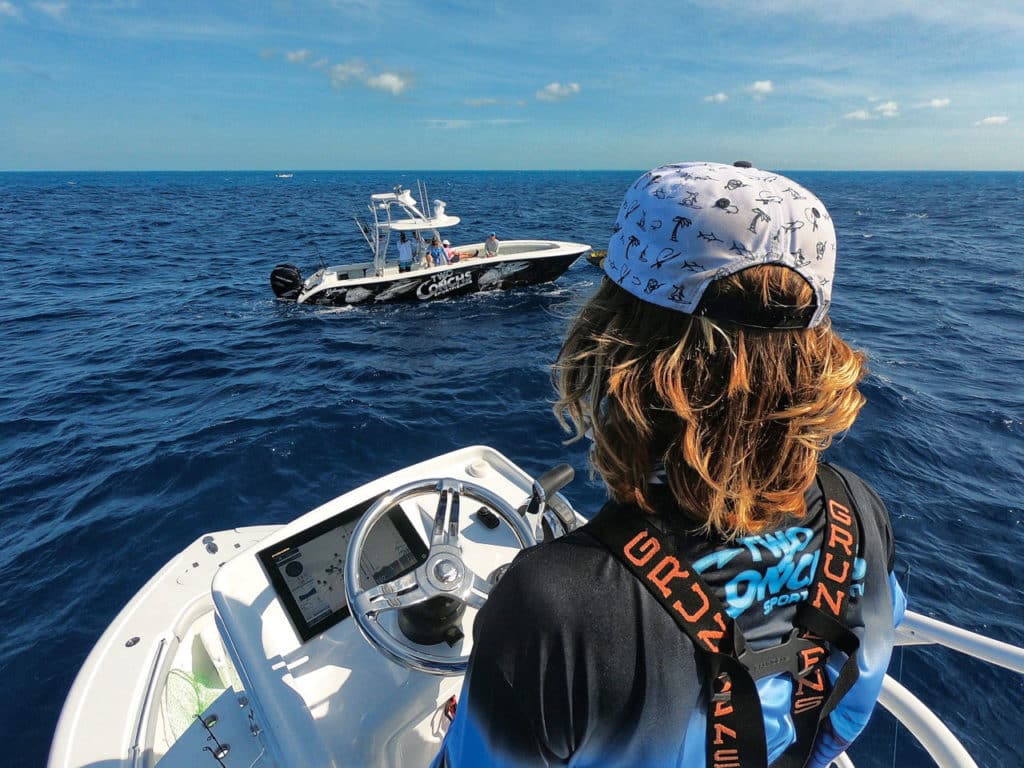
Although I’ve been an electronics writer for 10 years, I have no magic power to predict the perfect helm setup for a new boat. The process of dialing in a new electronics package involves a lot questions about the boat, about fishing style and about budget.
But when a friend recently asked me to suggest options for his new 25-foot bay boat, and then he noted he’d be adding a second station, I hesitated. What exactly did I know about adding electronics to a supplemental helm — whether for a bay boat or small center-console?
Would he need a second fully outfitted multifunction display up top? Or could he opt instead for a less-expensive plotter connected by Ethernet to the helm unit? Would a black-box sonar module be a more cost-effective solution? What about a repeater/controller app and an iPad with a waterproof case? Is there a wireless solution?
I reached out to several of my industry sources and discovered that my friend’s situation has become a lot more common, and that wireless connectivity is truly on its way.
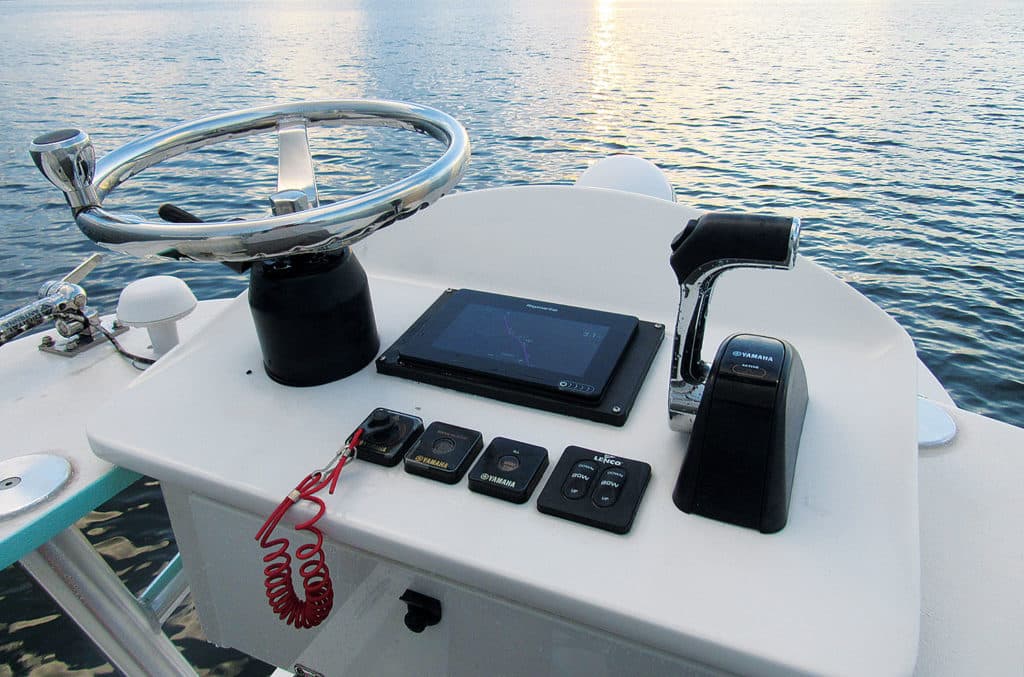
Making Connections
“The trend to bigger bay boats has been accompanied by a trend to second stations,” says Charlie Johnson, marketing director for Maverick Boat Company, makers of Pathfinder bay boats. “Not only are the bigger bay boats better able to support and balance the added weight up high, in addition, they’re being used in more beach-style fishing situations, where the added elevation of a second station gives you a real advantage in seeing schools of fish swimming on or near the surface.”
Pathfinder Boats began installing second-station units at its factory four years ago; prior to that, the towers were all aftermarket add-ons. Among 25- and 26-foot models, 40 percent leave the factory with an elevated helm.
My friend had ordered a compact crow’s-nest-style tower, designed so the helmsman stands on top of the center console. He would have room for a 9-inch display, and was leaning toward Garmins.
If it were my boat, I’d use a single big screen at the helm and a smaller screen at the second station,” says David Dunn, director of sales and marketing for Garmin. “The helm unit shares waypoints, sonar … anything you could see on the lower display you could see on the upper. They’re both MFDs. Both are masters.”
Both units don’t have to come with sonar. The helm unit can be a sonar/plotter combination unit attached to an appropriate transducer. The upper unit could be a less-expensive nonsonar chart plotter; it will display the sonar from the helm unit.
The primary caveat is that upstairs/downstairs units must be networkable. Lower-cost MFDs such as Garmin’s Striker, Raymarine’s Dragonfly, Simrad’s GO and Lowrance’s Elite-Ti units do not fully network with other displays; they’re meant as stand-alone machines.
With complementary units, a second station can be functional as long as there’s a single Ethernet network connection between machines and a power cord routed to the power source. Most everything the helm unit can display, the networked unit can also show. Some systems, however, require a supplemental NMEA 2000 connection to display functions such as autopilot and engine data.
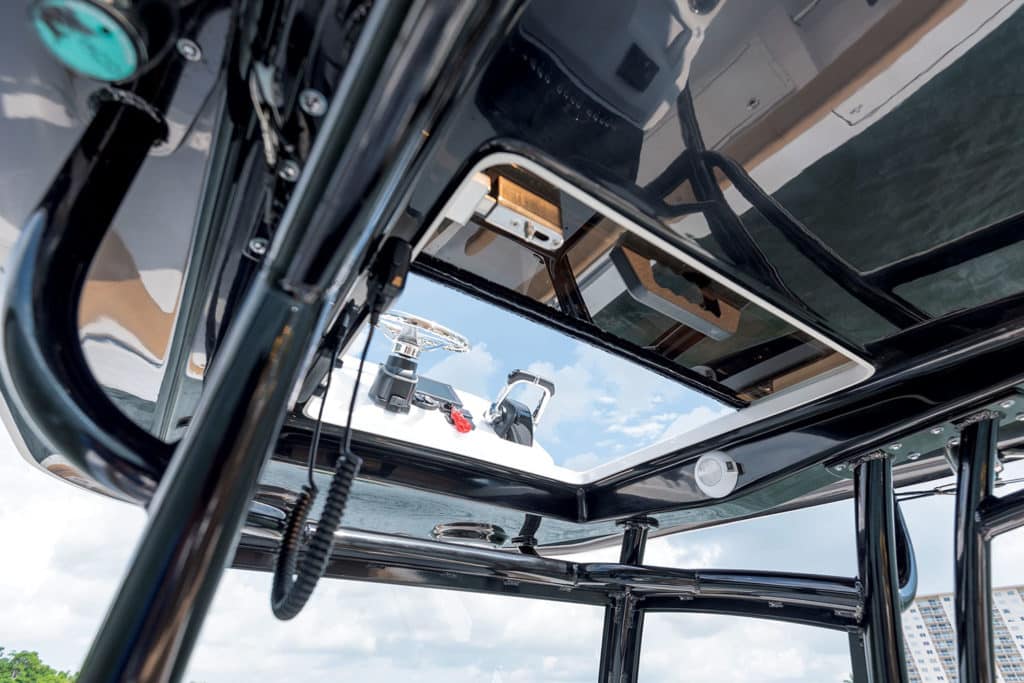
Alternative Views
Another option to consider could be a separate black-box sonar module that mounts below the console and feeds sonar information to a multifunction display. If you happen to have a sonar module and helm MFD already, adding a second nonsonar MFD to an upper station makes sense. If you don’t own a module, you need to price the components.
The module route generally costs more. But consider these two roughly equivalent Raymarine setups: 1)an Axiom Pro 9 at the helm and an Axiom 7 (without sonar) up top: $3,198; 2) an Axiom 9 (without sonar) at the helm, an Axiom 7 (without sonar) up top, and an RVX1000 module: $2,797.
Raymarine and other manufacturers also offer apps that can pull electronics-display information from an MFD to a tablet, where you can see and control all functions. If you already own a tablet and a waterproof case, this could be a cost-effective solution — whether temporary or long-term.
“The downside is the typical tablet-on-a-boat problems: poor sunlight-viewing, glare, nonwaterproof, prone to breakage,” says Raymarine marketing director Jim McGowan.
However, if you purchase a RAM mount for the tablet so you can adjust the screen angle, you might find it workable.
In the case of Furuno and Lowrance/Simrad (both brands are owned by the same parent company: Navico), most of the same rules apply. However, Furuno does not make fully networkable displays in a 7-inch size. The company’s TZtouch2 MFDs come in 12- and 15-inch sizes.
“There are no low-cost options,” says Eric Kunz, Furuno senior product manager. “But the good news is that there are no usability limitations.”
Kunz did, however, grant that the TZT tablet app could provide a viable second-station option, “but I don’t see it being very common.”
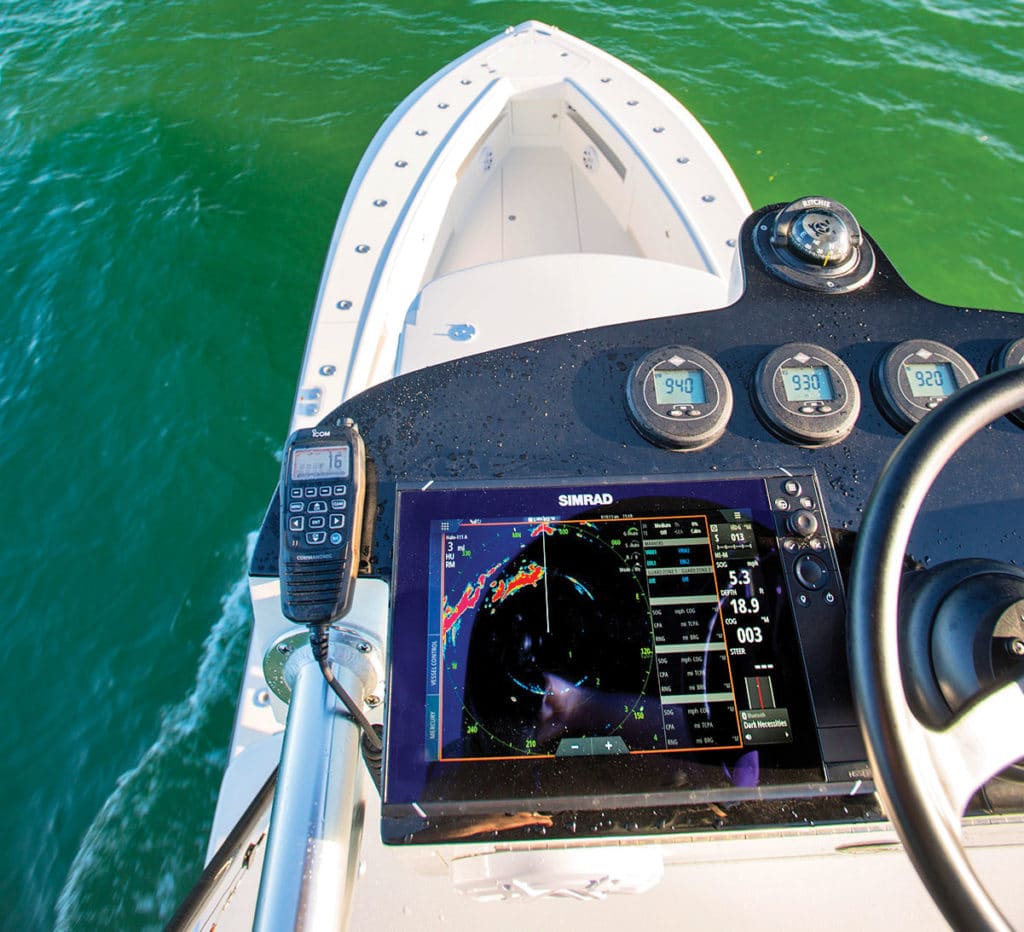
Wireless is Here
Lowrance HDS and Simrad NSS displays can fully network and share data over more than one MFD. Simrad product line director Steve Thomas says that an NMEA 2000 network is also required to carry autopilot and SonicHub data as well as instrument information among two or more Navico-brand units.
However, the company has generated some interesting second-station solutions. Capt. Robert Trosset III, son of longtime Key West charter guide R.T., wanted steering in his second station without having to run hydraulic lines to the tower, Thomas says. With NMEA 2000 and Ethernet, along with an autopilot system, Trosset steers his boat through his Simrad MFD, using its knobs and on-screen buttons.
Read Next: Rig Your Bay Boat for Bluewater Fishing
Lowrance also just debuted wireless communication through its new Elite Ti2 units. This opens a whole new category of compatibility. With one Elite Ti2 at the helm and a second one in the tower, the two units wirelessly share information. The second-station unit would need only a power source.
Wireless represents the wave of the future. In a few short years, the debate over which units to use — either at two separate stations or side by side at the helm — will be moot. For now, my friend decided on a Garmin 7612xsv and a Garmin 942, and I have gained some valuable insight.

